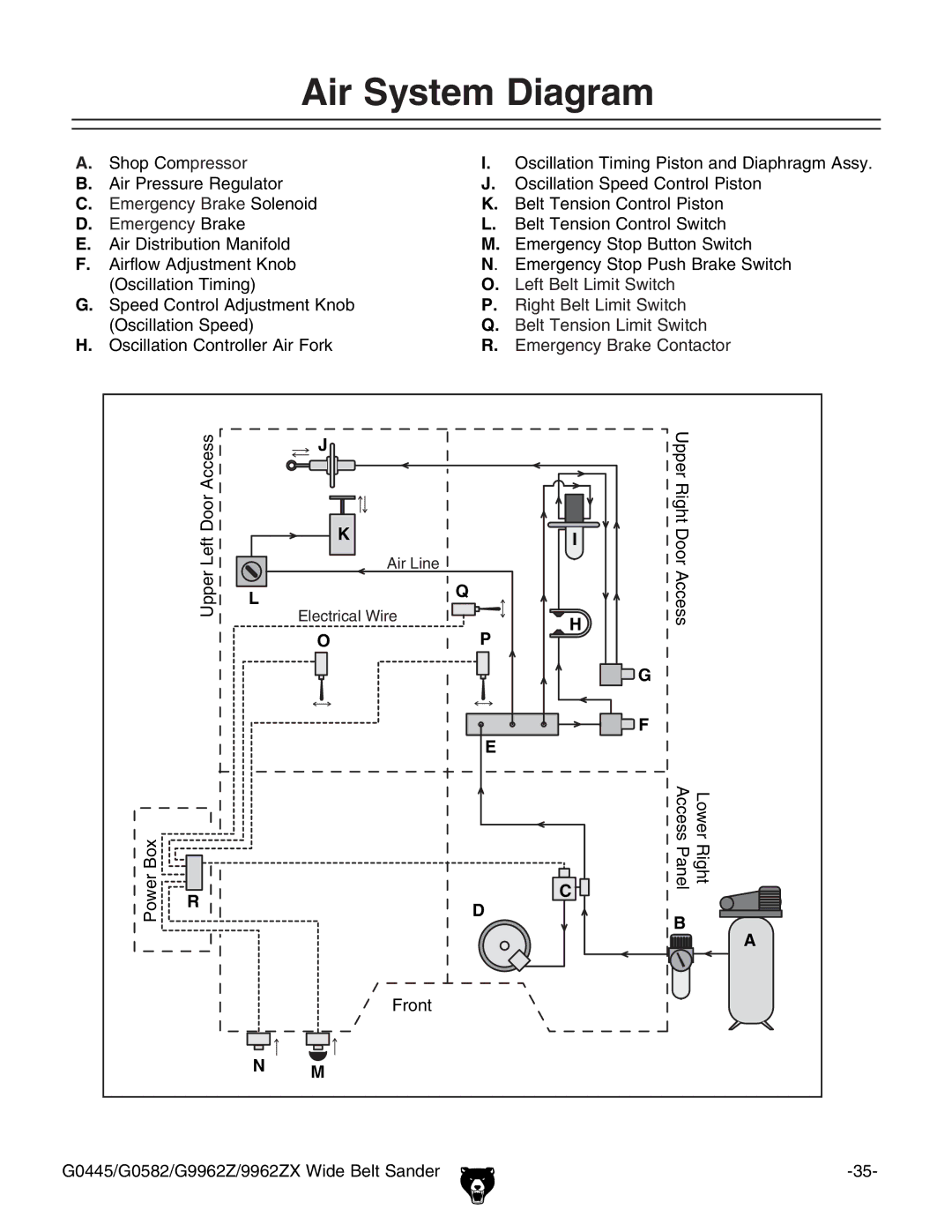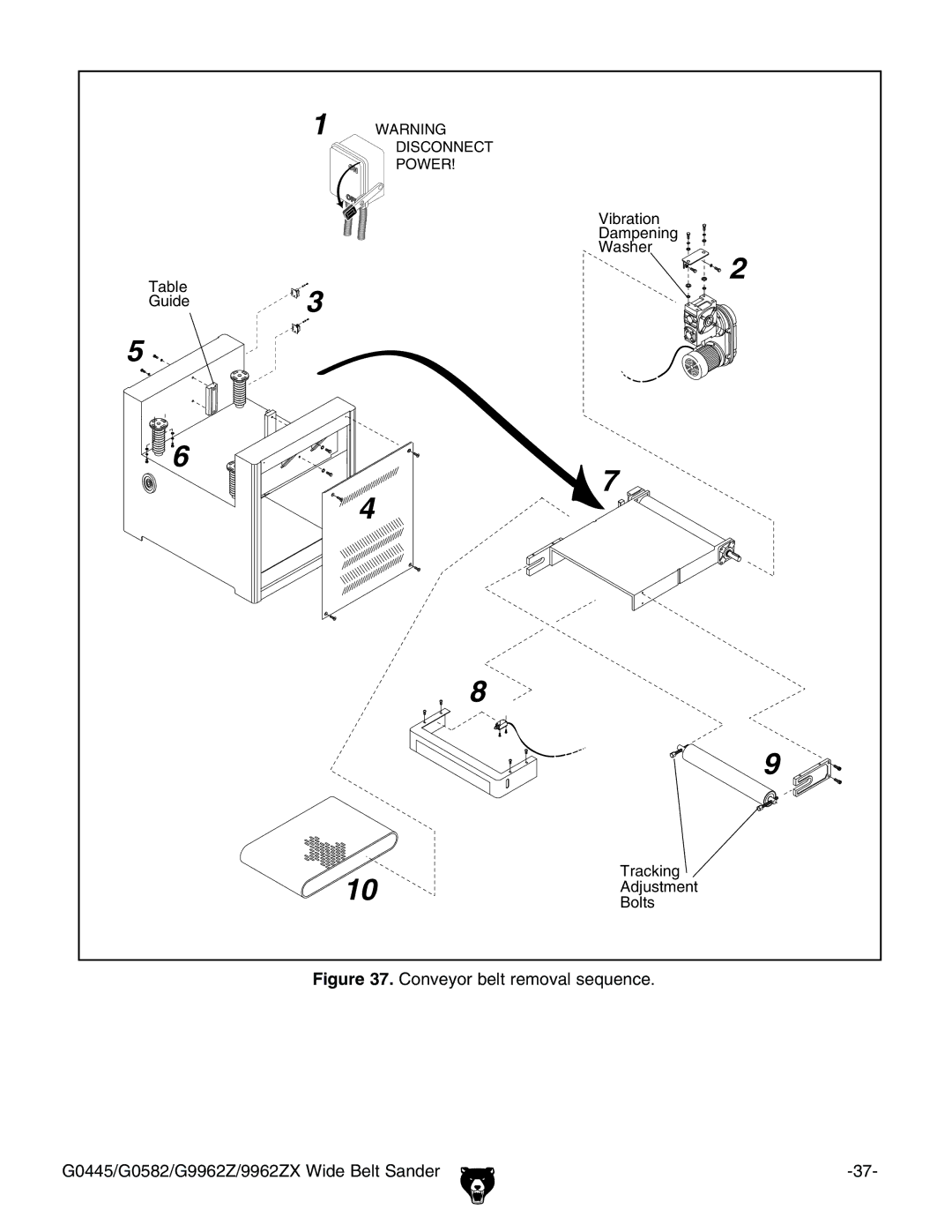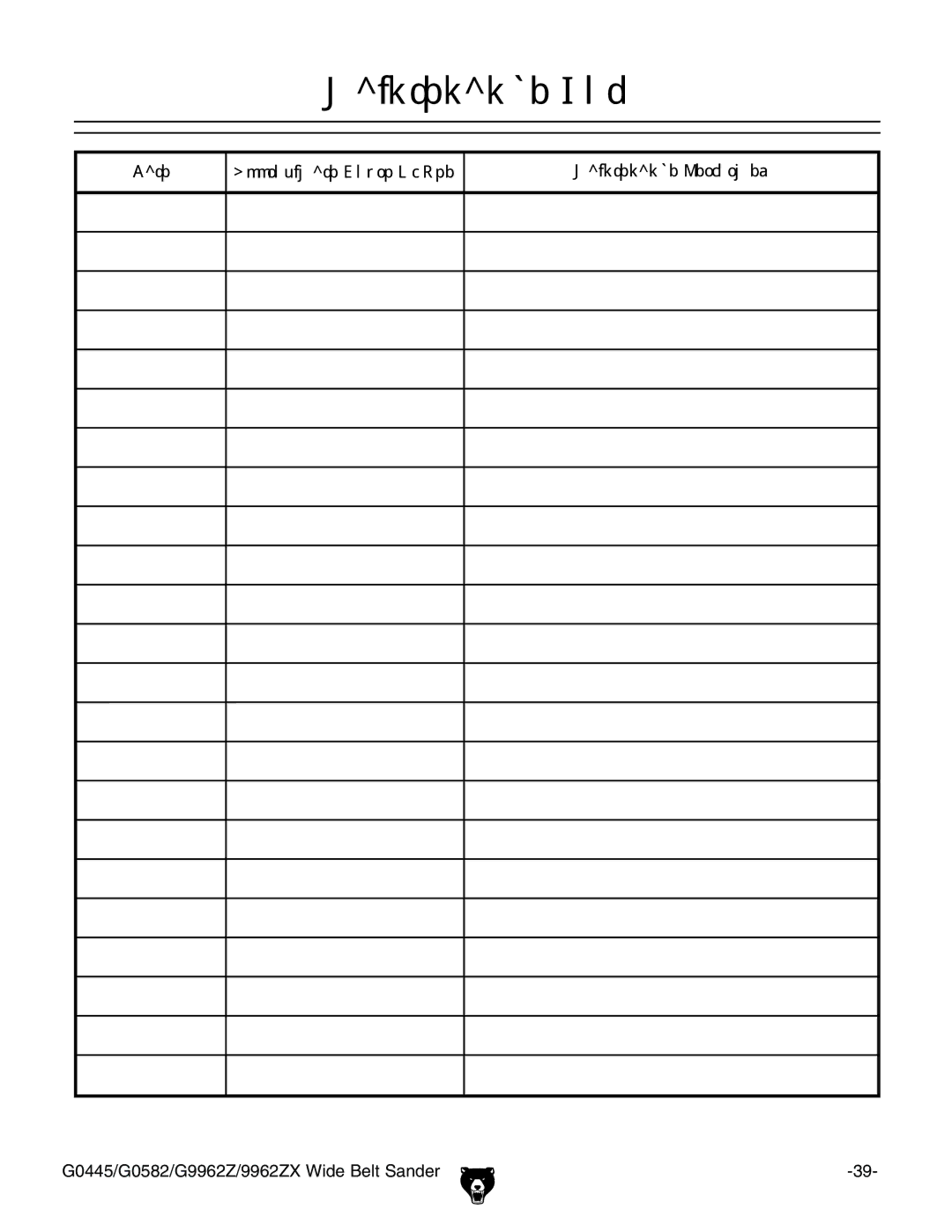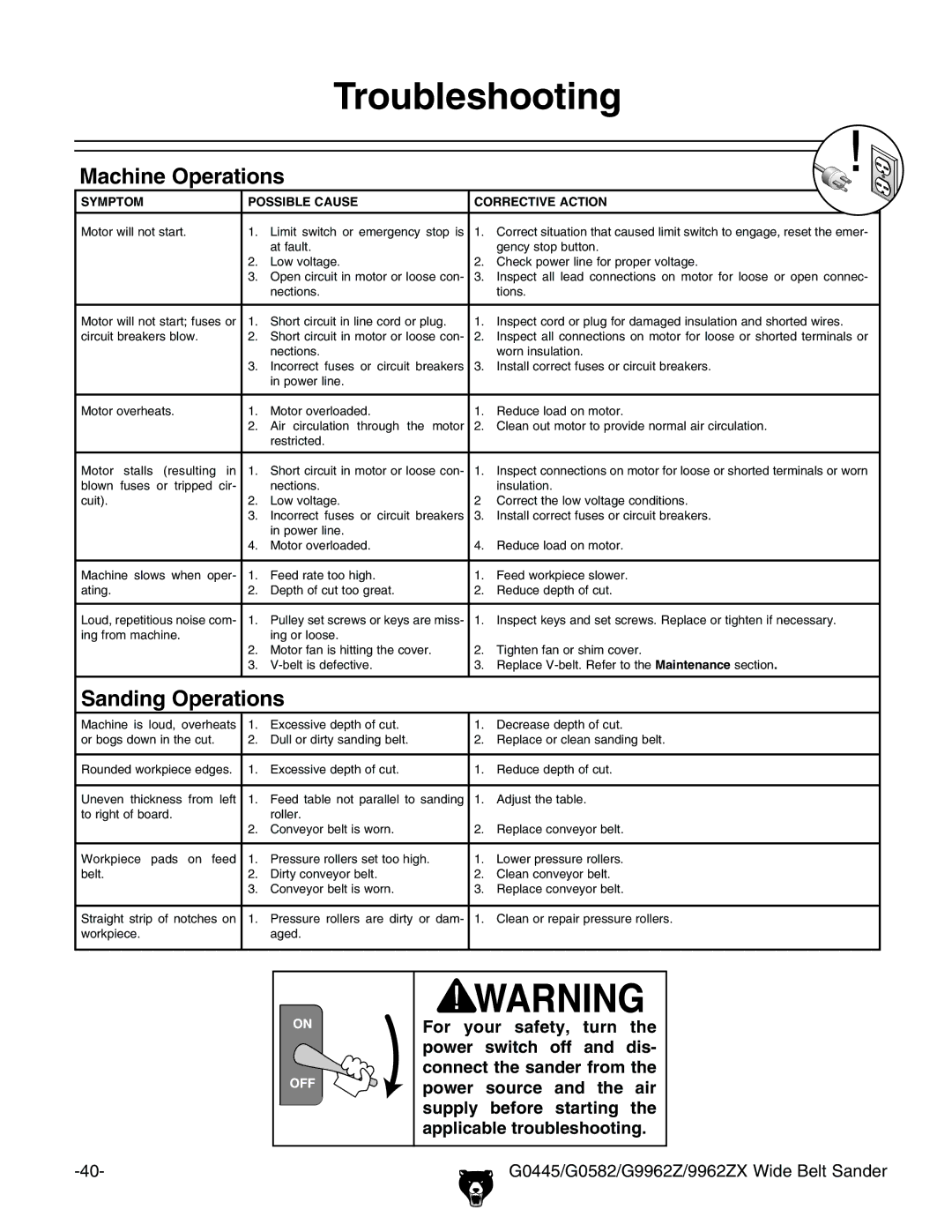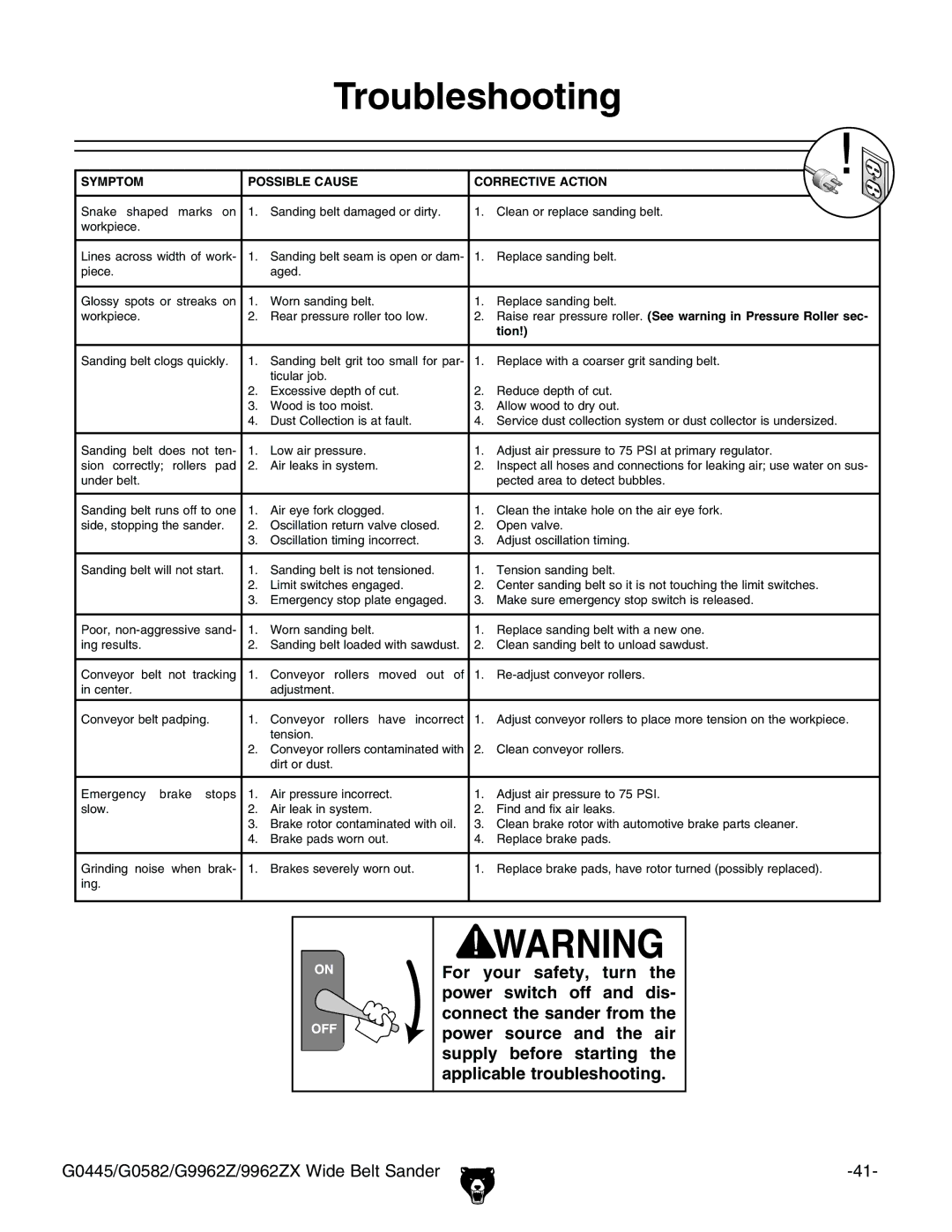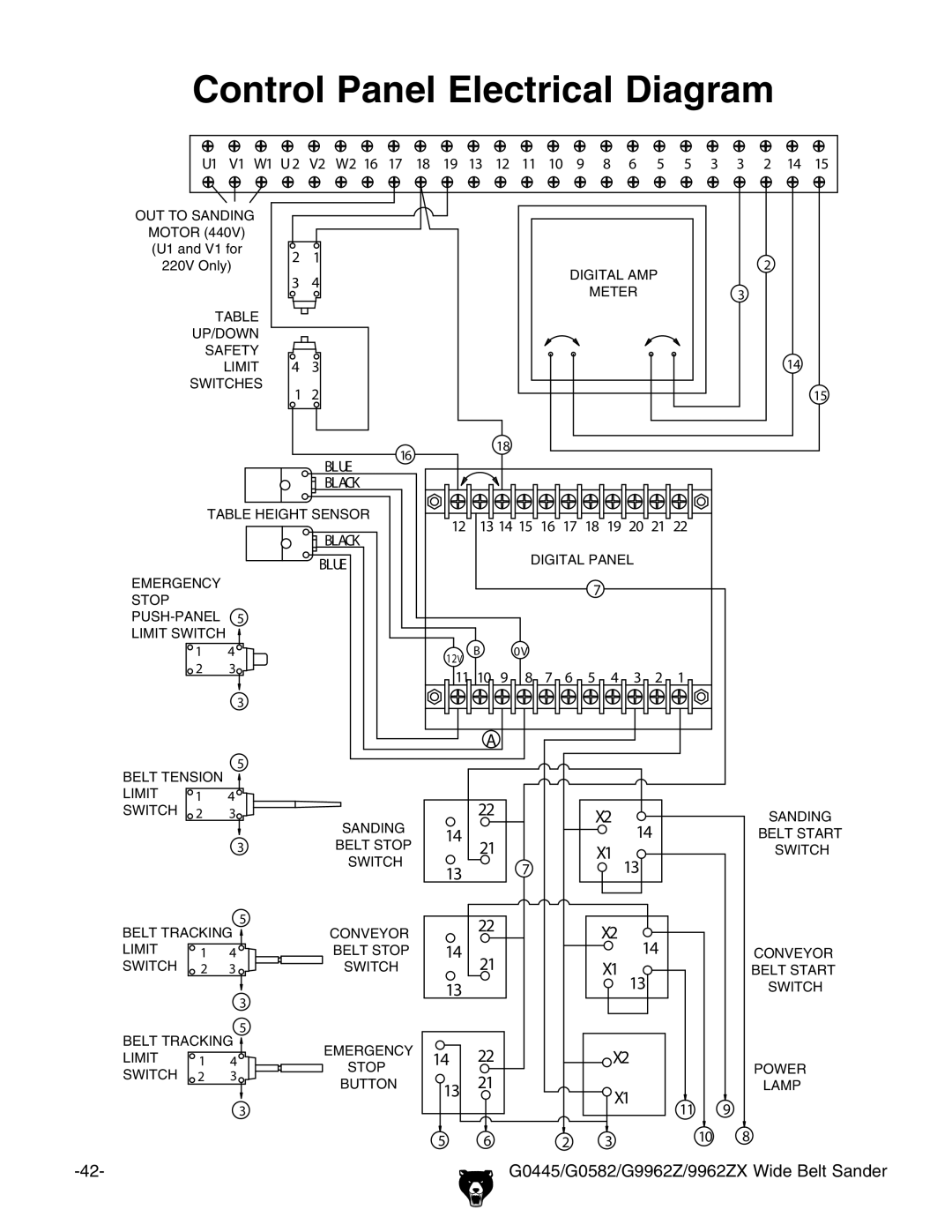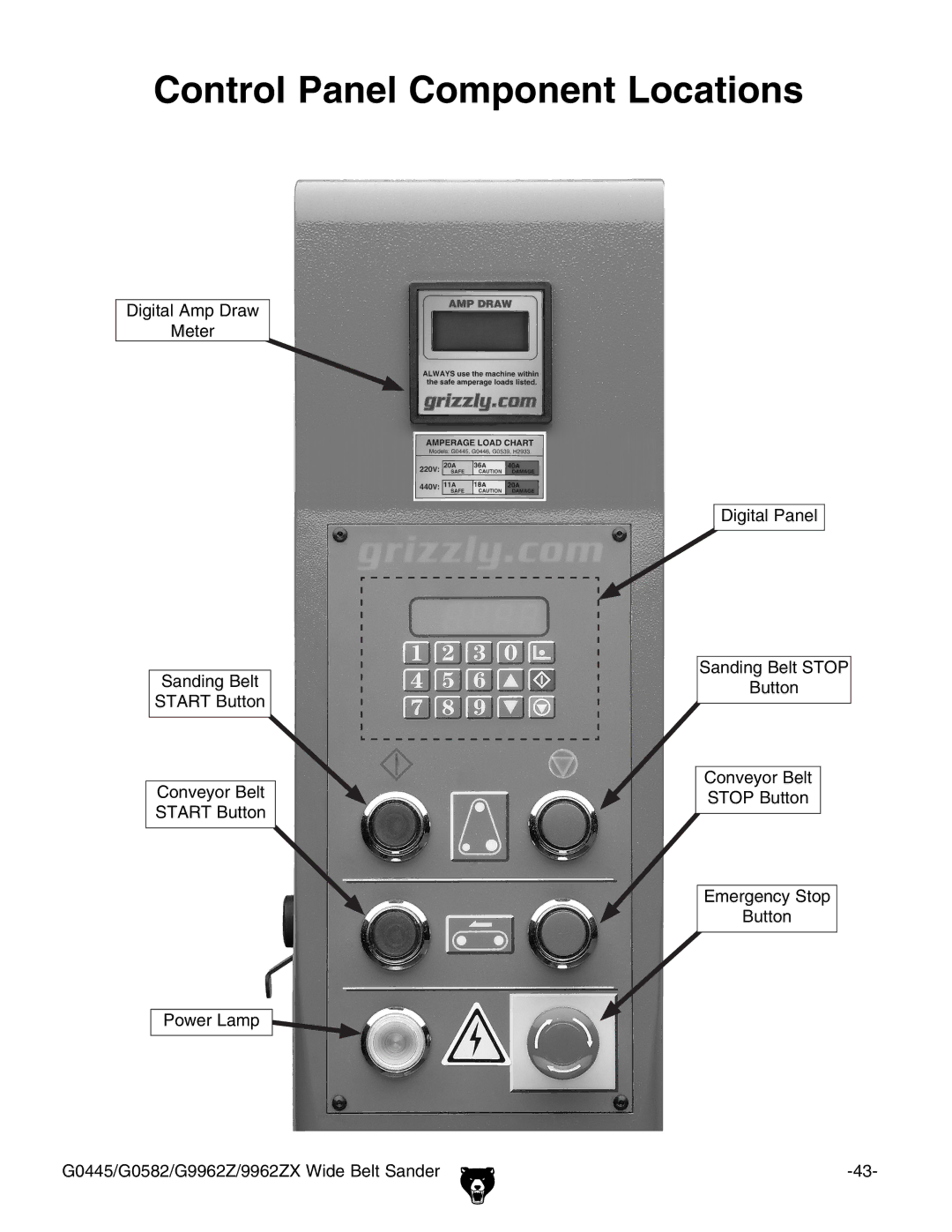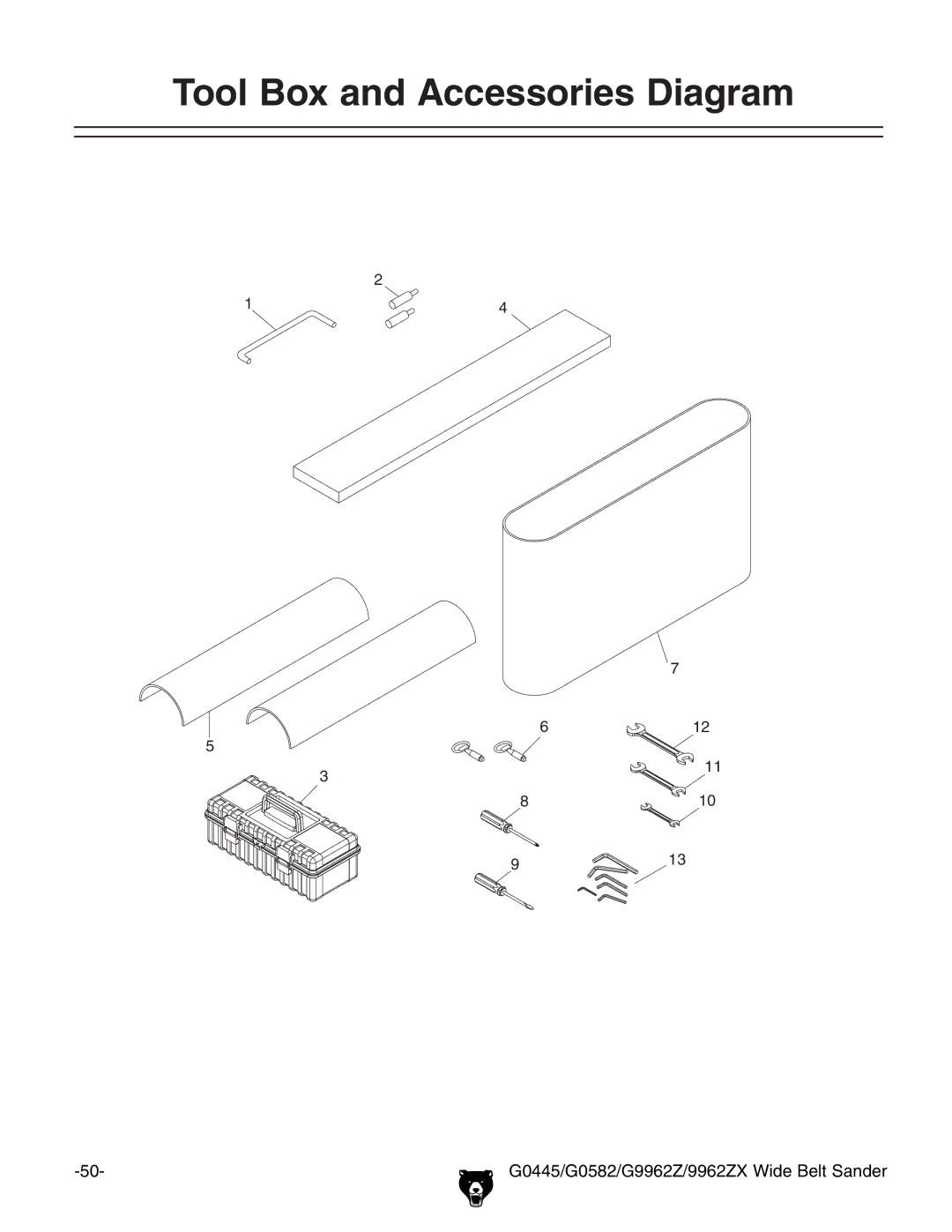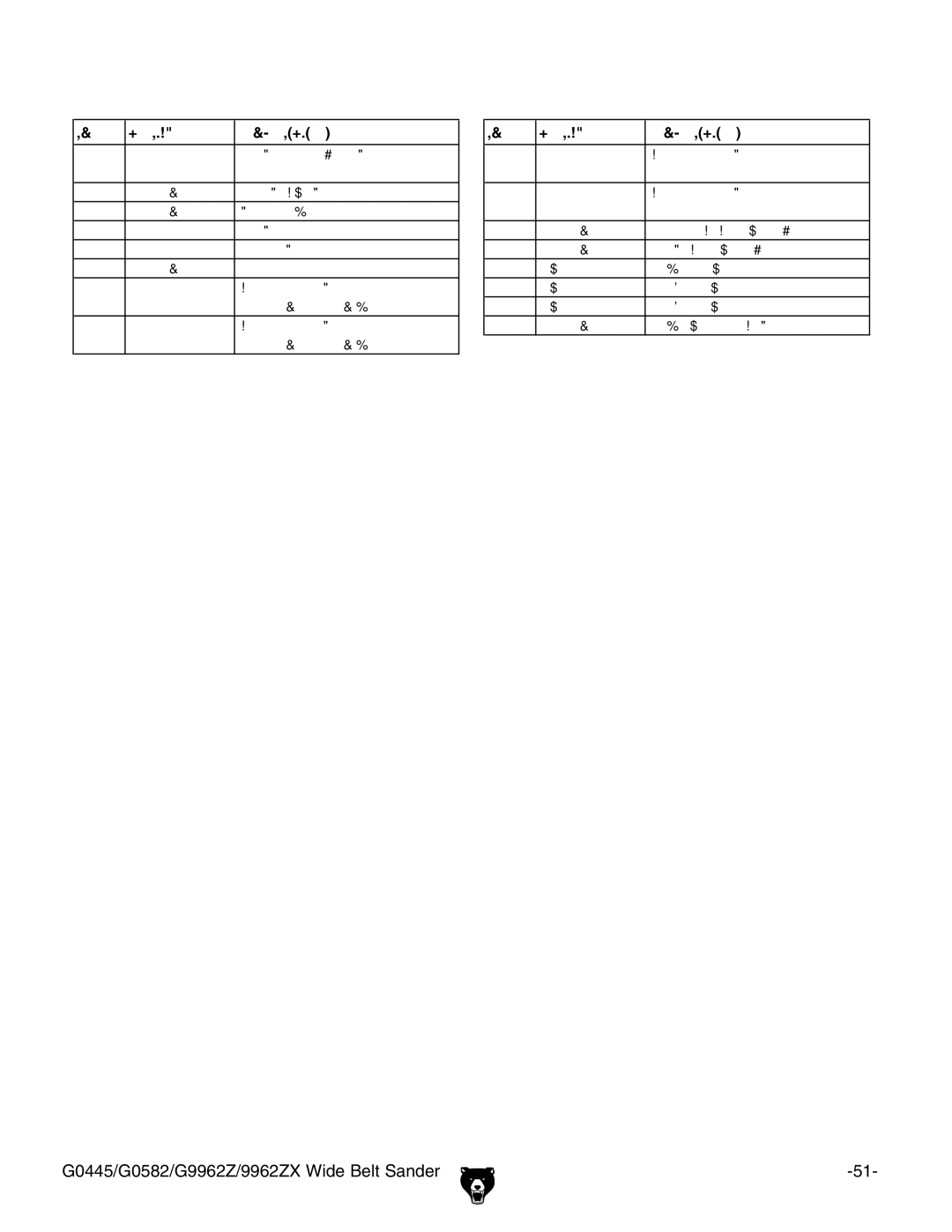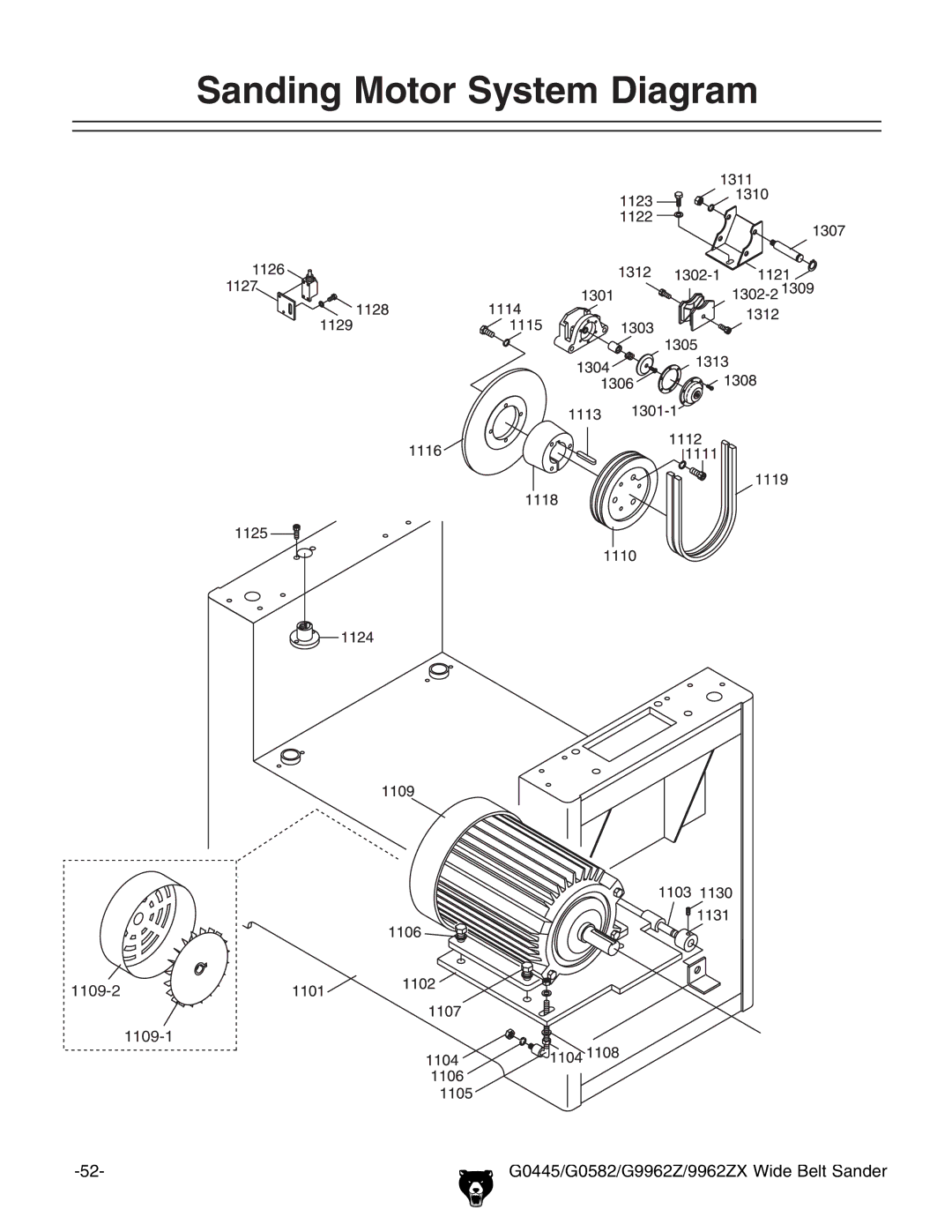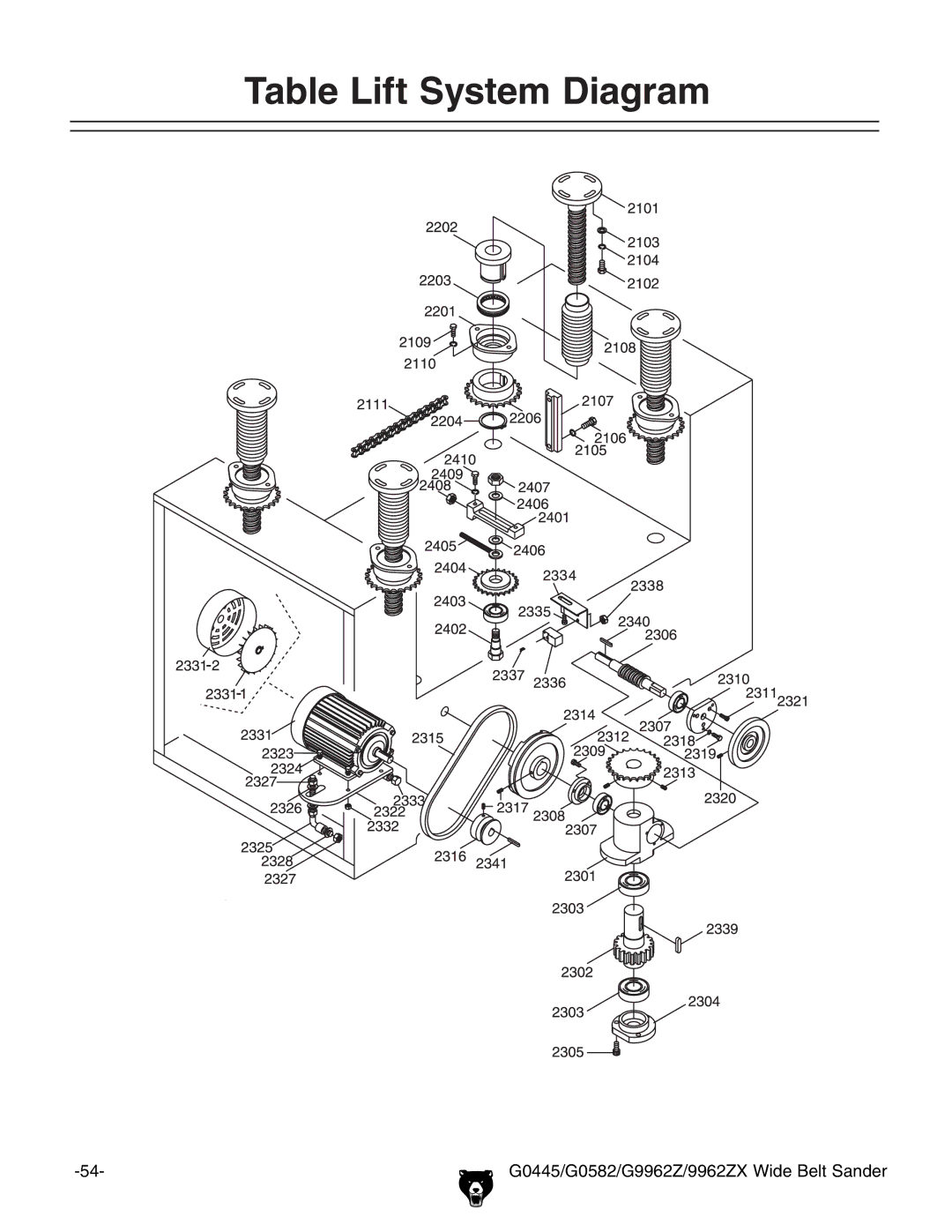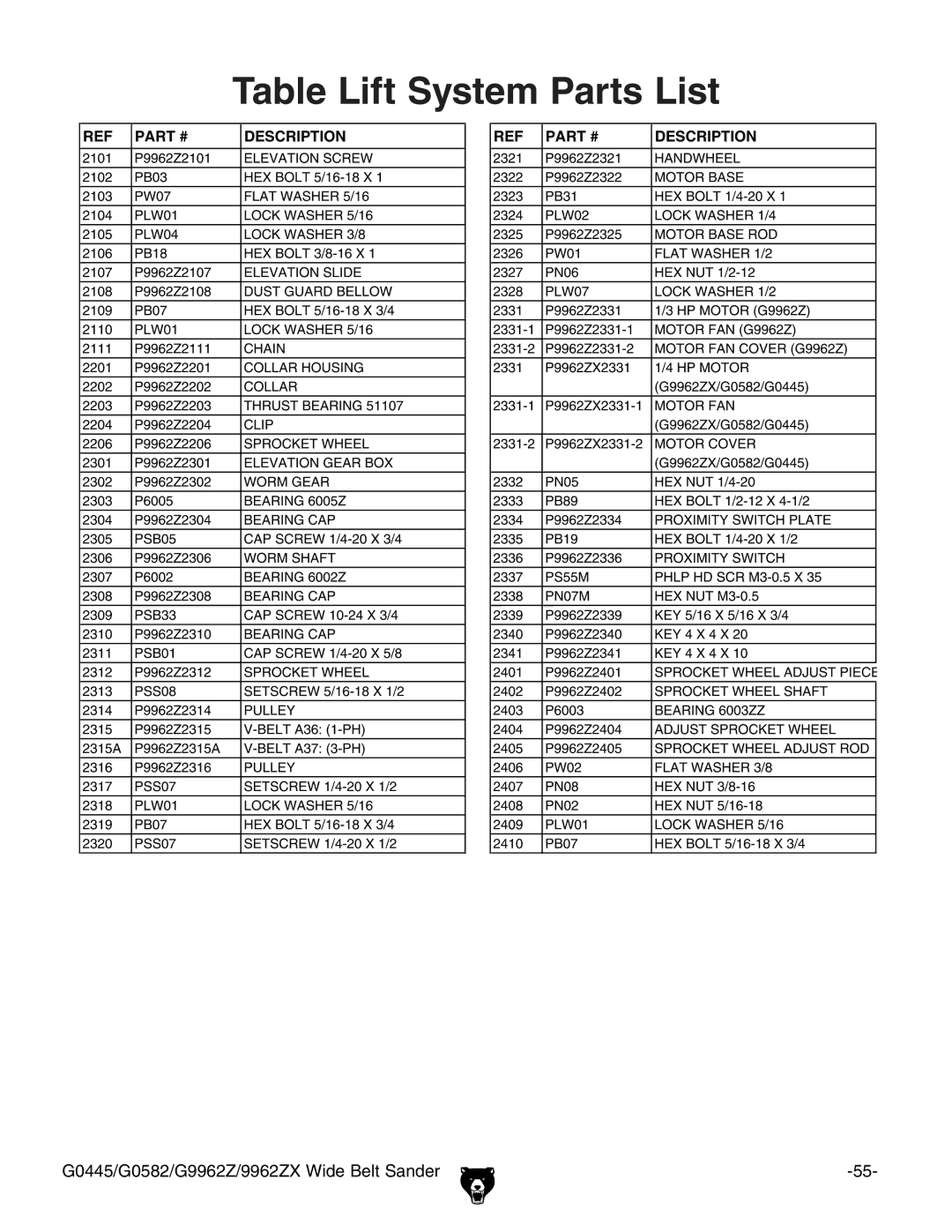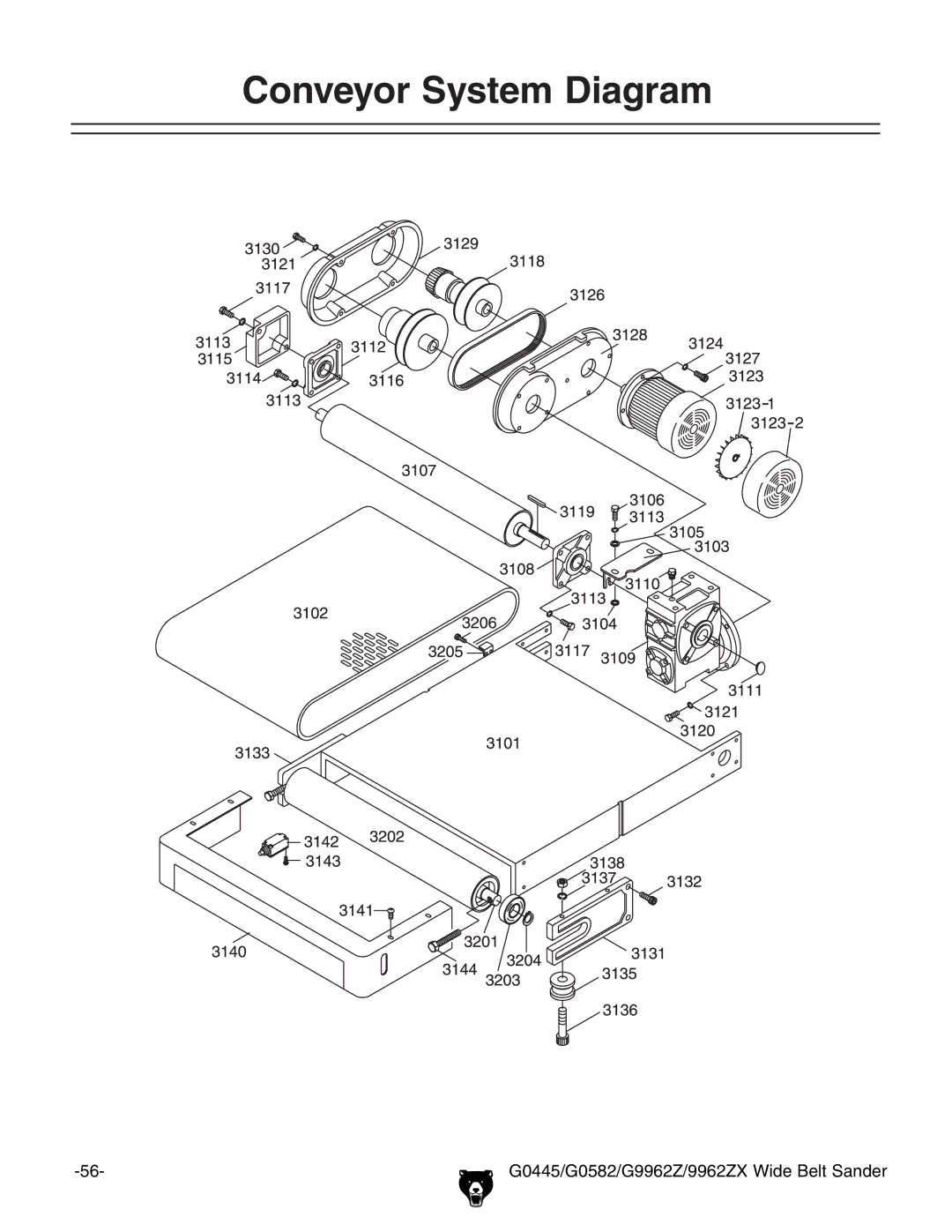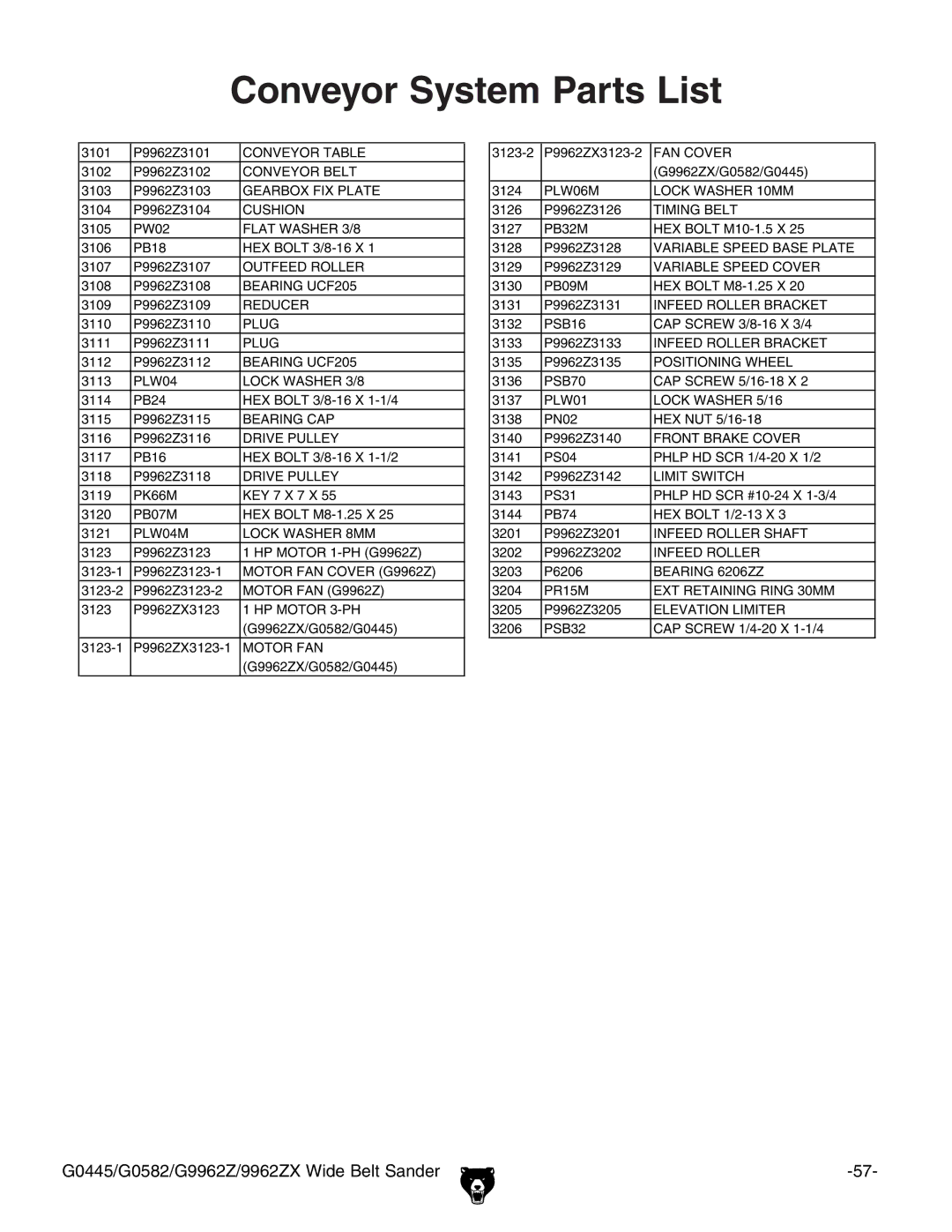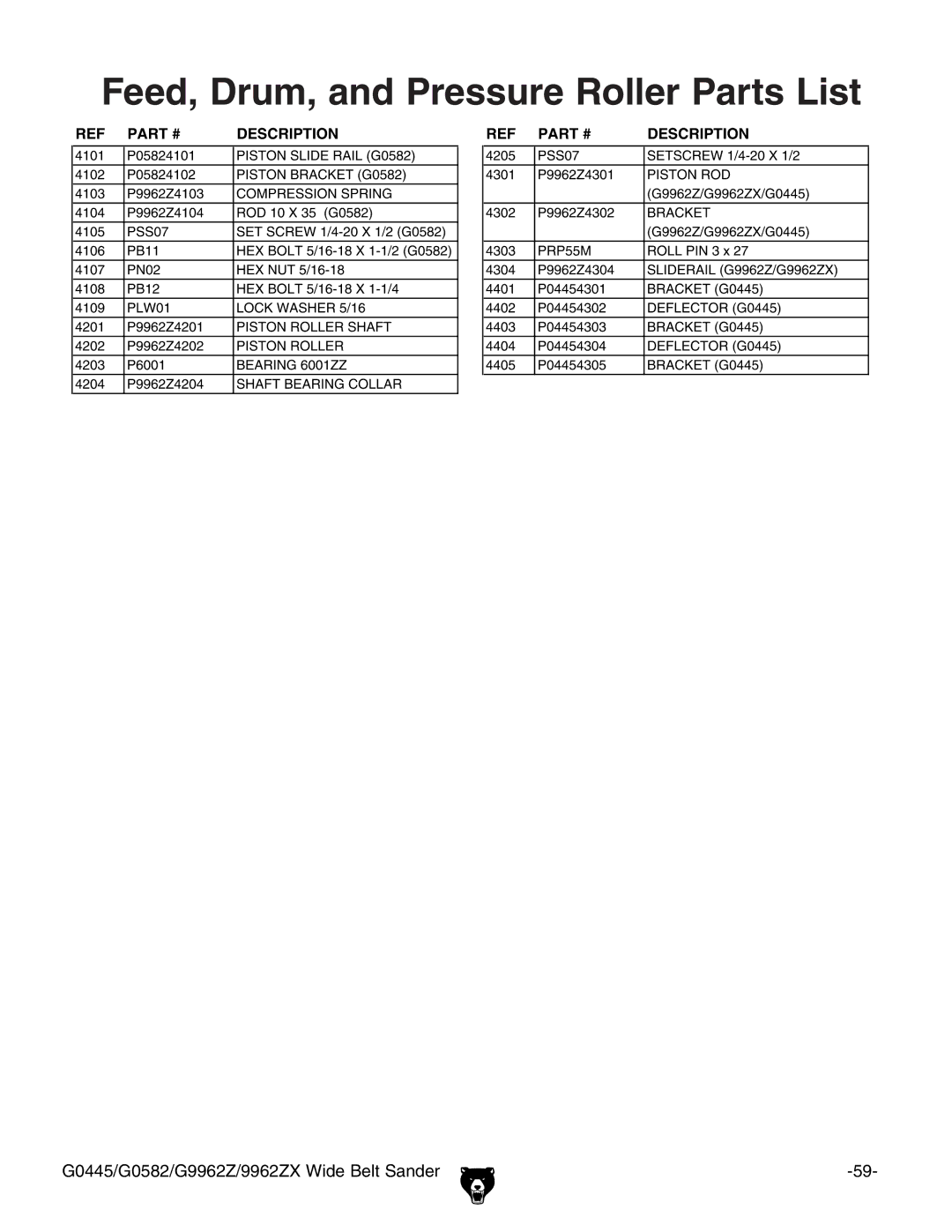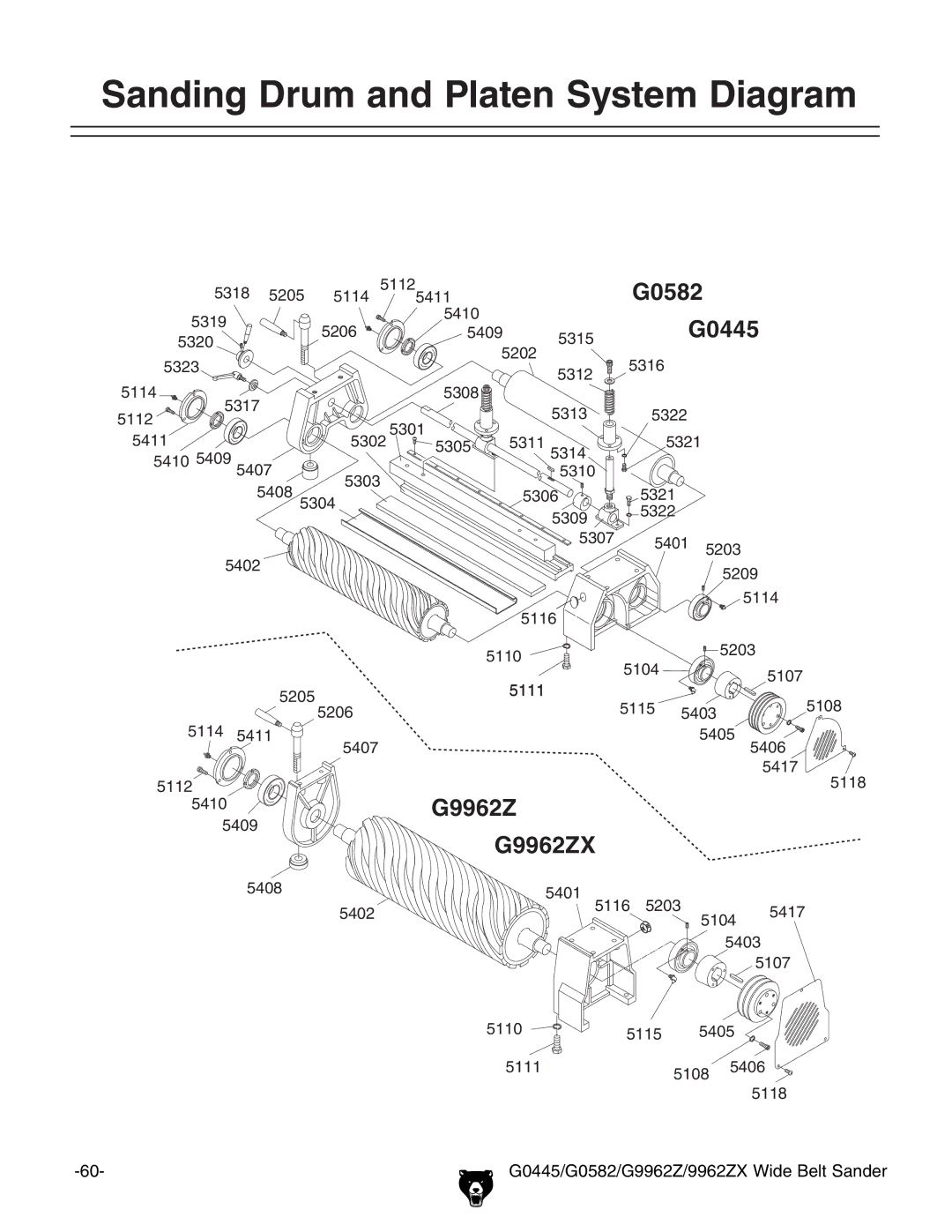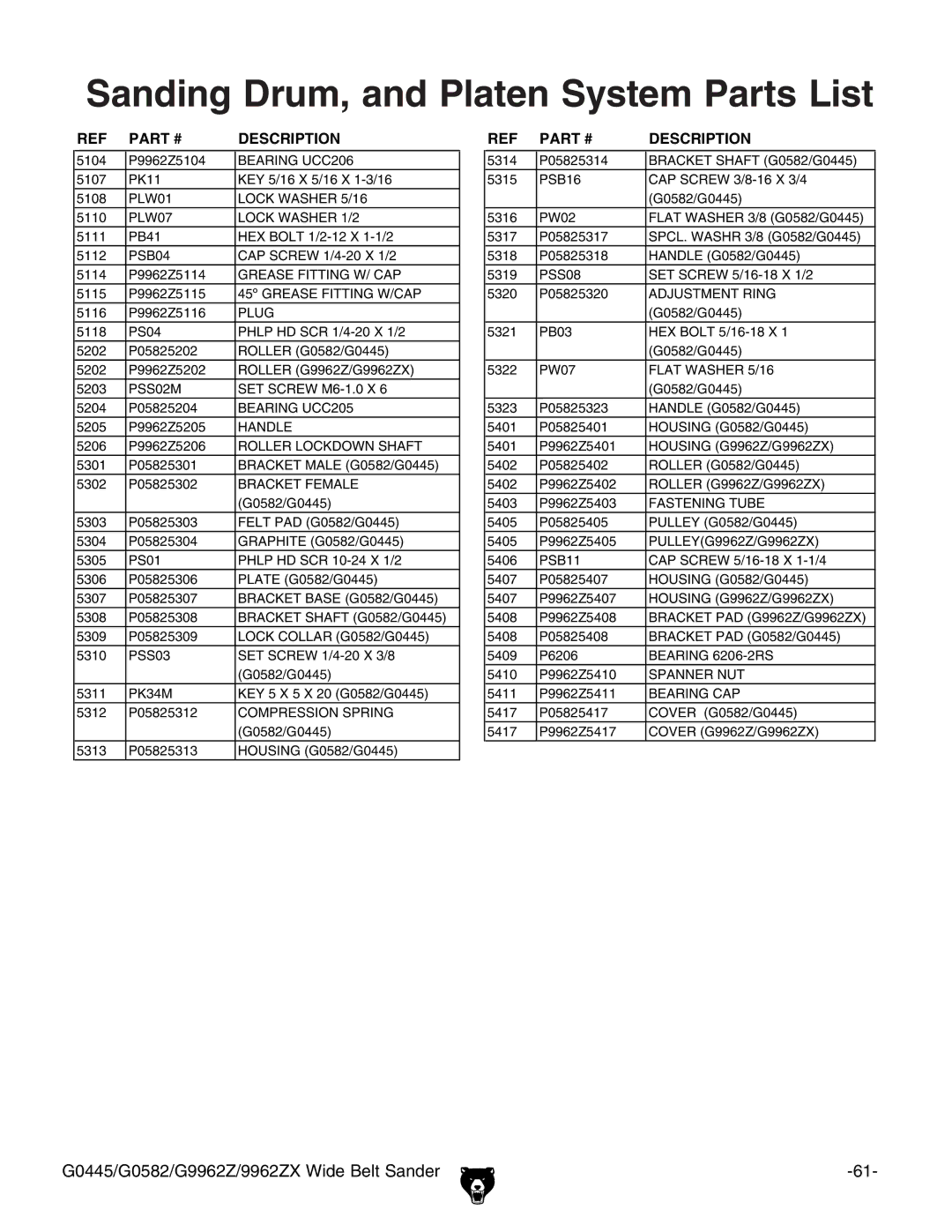
Troubleshooting
SYMPTOM |
| POSSIBLE CAUSE | CORRECTIVE ACTION | ||
|
|
|
|
| |
Snake shaped marks on | 1. | Sanding belt damaged or dirty. | 1. | Clean or replace sanding belt. | |
workpiece. |
|
|
|
|
|
|
|
|
|
| |
Lines across width of work- | 1. | Sanding belt seam is open or dam- | 1. | Replace sanding belt. | |
piece. |
|
| aged. |
|
|
|
|
|
|
| |
Glossy spots or streaks on | 1. | Worn sanding belt. | 1. | Replace sanding belt. | |
workpiece. |
| 2. | Rear pressure roller too low. | 2. | Raise rear pressure roller. (See warning in Pressure Roller sec- |
|
|
|
|
| tion!) |
|
|
|
|
| |
Sanding belt clogs quickly. | 1. | Sanding belt grit too small for par- | 1. | Replace with a coarser grit sanding belt. | |
|
|
| ticular job. |
|
|
|
| 2. | Excessive depth of cut. | 2. | Reduce depth of cut. |
|
| 3. | Wood is too moist. | 3. | Allow wood to dry out. |
|
| 4. | Dust Collection is at fault. | 4. | Service dust collection system or dust collector is undersized. |
|
|
|
|
| |
Sanding belt does not ten- | 1. | Low air pressure. | 1. | Adjust air pressure to 75 PSI at primary regulator. | |
sion correctly; rollers pad | 2. | Air leaks in system. | 2. | Inspect all hoses and connections for leaking air; use water on sus- | |
under belt. |
|
|
|
| pected area to detect bubbles. |
|
|
|
|
| |
Sanding belt runs off to one | 1. | Air eye fork clogged. | 1. | Clean the intake hole on the air eye fork. | |
side, stopping the sander. | 2. | Oscillation return valve closed. | 2. | Open valve. | |
|
| 3. | Oscillation timing incorrect. | 3. | Adjust oscillation timing. |
|
|
|
|
| |
Sanding belt will not start. | 1. | Sanding belt is not tensioned. | 1. | Tension sanding belt. | |
|
| 2. | Limit switches engaged. | 2. | Center sanding belt so it is not touching the limit switches. |
|
| 3. | Emergency stop plate engaged. | 3. | Make sure emergency stop switch is released. |
|
|
|
|
| |
Poor, | 1. | Worn sanding belt. | 1. | Replace sanding belt with a new one. | |
ing results. |
| 2. | Sanding belt loaded with sawdust. | 2. | Clean sanding belt to unload sawdust. |
|
|
|
|
|
|
Conveyor belt not | tracking | 1. | Conveyor rollers moved out of | 1. | |
in center. |
|
| adjustment. |
|
|
|
|
|
|
| |
Conveyor belt padping. | 1. | Conveyor rollers have incorrect | 1. | Adjust conveyor rollers to place more tension on the workpiece. | |
|
|
| tension. |
|
|
|
| 2. | Conveyor rollers contaminated with | 2. | Clean conveyor rollers. |
|
|
| dirt or dust. |
|
|
|
|
|
|
|
|
Emergency brake | stops | 1. | Air pressure incorrect. | 1. | Adjust air pressure to 75 PSI. |
slow. |
| 2. | Air leak in system. | 2. | Find and fix air leaks. |
|
| 3. | Brake rotor contaminated with oil. | 3. | Clean brake rotor with automotive brake parts cleaner. |
|
| 4. | Brake pads worn out. | 4. | Replace brake pads. |
|
|
|
|
| |
Grinding noise when brak- | 1. | Brakes severely worn out. | 1. | Replace brake pads, have rotor turned (possibly replaced). | |
ing. |
|
|
|
|
|
|
|
|
|
|
|
For your safety, turn the power switch off and dis- connect the sander from the power source and the air supply before starting the applicable troubleshooting.
G0445/G0582/G9962Z/9962ZX Wide Belt Sander |






